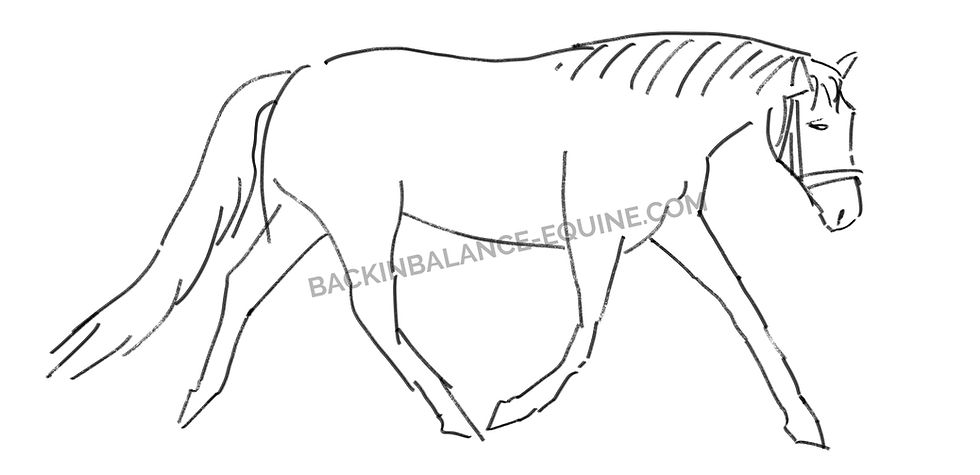If a Horse is Ridden Correctly, they Shouldn’t Need Ongoing Manual Therapy
- Academy Team
- 11 hours ago
- 2 min read
It sounds logical — but it oversimplifies equine biomechanics and ignores one crucial fact: horses were not designed to be ridden.

Horses and the Challenge of Riding
Horses evolved as cursorial grazers, built for sustained movement and flight from predators — not for carrying weight on their backs. When we add a rider:
The horse must adapt to an unnatural load placed directly over the thoracolumbar spine.
Even with the best balance, the rider adds pressure, shifts in weight, and asymmetry that the horse must constantly compensate for.
Studies show that rider asymmetry, saddle fit, and training style all influence muscle activity and back comfort (Greve & Dyson, 2013; Symes & Ellis, 2009).
This means even “correct” riding introduces stresses the horse wouldn’t otherwise face.
Horses as Athletes
When we ride, we’re not just asking horses to carry us — we’re asking them to perform as athletes:
Collection, lateral work, and jumping all demand high levels of strength, coordination, and flexibility.
Like human athletes, horses develop micro-strains, compensations, and muscle imbalances even when trained correctly.
Manual therapy, combined with correct training, supports recovery, prevents overload, and promotes long-term soundness.
📖 Haussler (1999) and Stubbs et al. (2011) highlight the prevalence of back pain in ridden horses, even those in good training programmes.
The Role of Manual Therapy
Manual therapy is not a substitute for correct riding — it’s a complement. It:
Relieves muscular tension from rider weight and saddle pressure.
Improves spinal mobility and postural control.
Helps horses recover from the repetitive stress of athletic training.
The Takeaway
Even the most correctly ridden horses face challenges they weren’t naturally built for. Just as elite human athletes benefit from physiotherapy and soft tissue work, so too do ridden horses. Manual therapy isn’t a sign of poor riding — it’s a proactive investment in your horse’s comfort, performance, and long-term health.

%20(1).png)



Comments